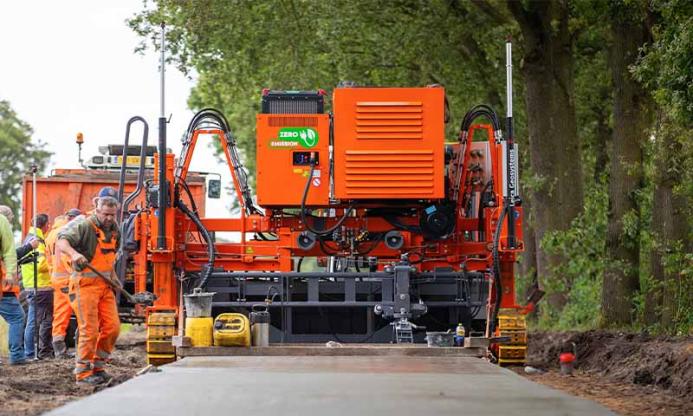World's first electric slipform paver launched
Roos Groep, working in partnership with Leica Geosystems, a division of Hexagon, have launched the world’s first fully electric slipform paver.
The innovation, which aims to reduce the carbon footprint of concrete pavement projects by eliminating the need for fossil fuels, is guided by Leica’s 3D machine control system, ensuring precise control and efficient operation.
The new paver integrates Leica Geosystems' MC1 3D machine control, which uses dual GNSS (Global Navigation Satellite System), which uses signals from two different satellite navigation systems to improve positioning accuracy and reliability, for directional control and a total station for precise height adjustments.
This, say the company, ensures millimetre-level accuracy, optimising energy efficiency and minimising downtime during construction.
Commenting on the launch, Tom Roos, CEO of Roos Groep, said: “We aim for a future where almost all concrete paving projects are carried out using electric equipment, drastically cutting emissions in the construction sector.” The development represents Roos Groep’s commitment to sustainability and innovation within the industry.
Leica Geosystems’s machine control director, Neil Williams, highlighted the importance of precision: “This project demonstrates the potential of combining sustainable construction machinery with advanced 3D machine control technology.”
The first use of this electric slipform paver was for a bicycle path in Reusel, Netherlands, where it showcased its capabilities in sustainable and precise construction.
Roos Groep collaborated with several partners, including Statec for design, Staad-Fusion for battery systems, and Hydrocan Engineering for automation. The paver also received advisory support and CE certification from Ingenieursbureau Van Asseldonk.

